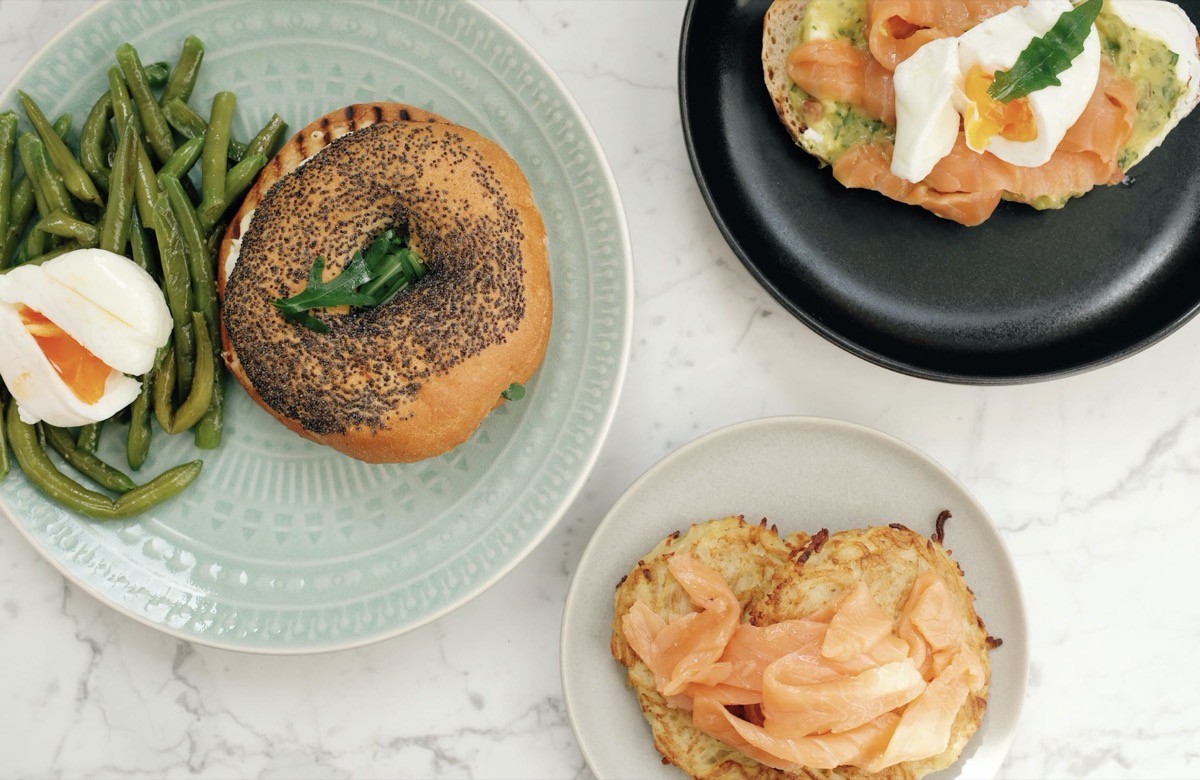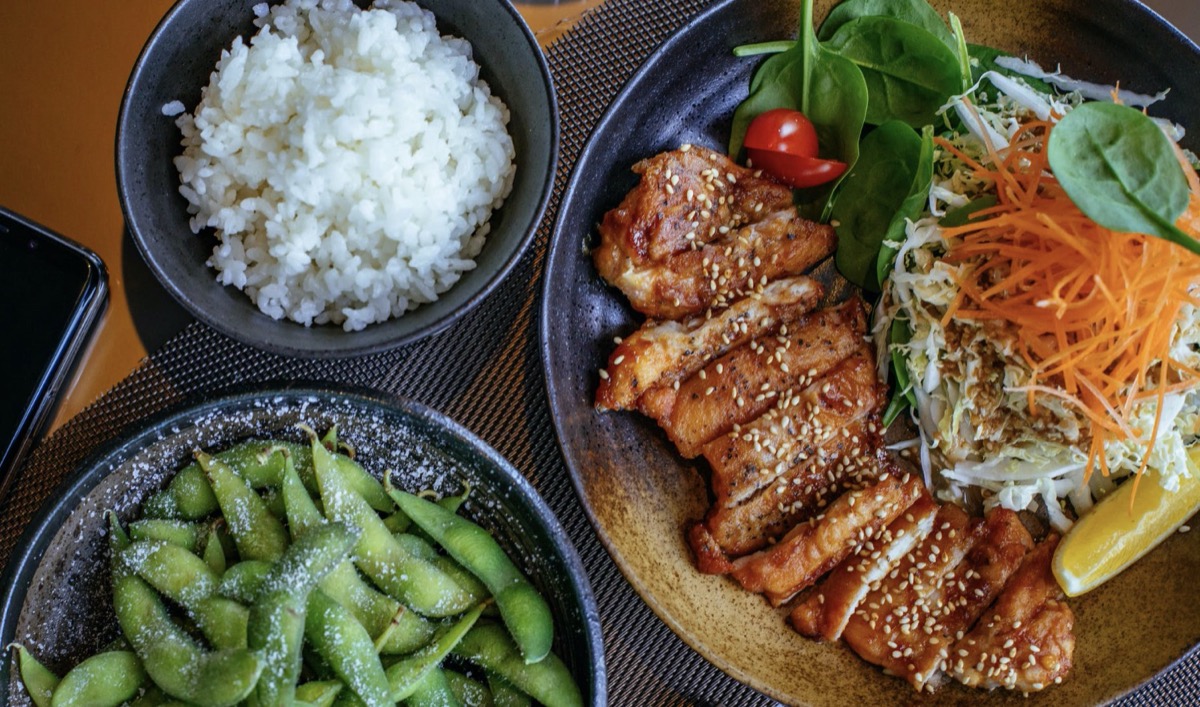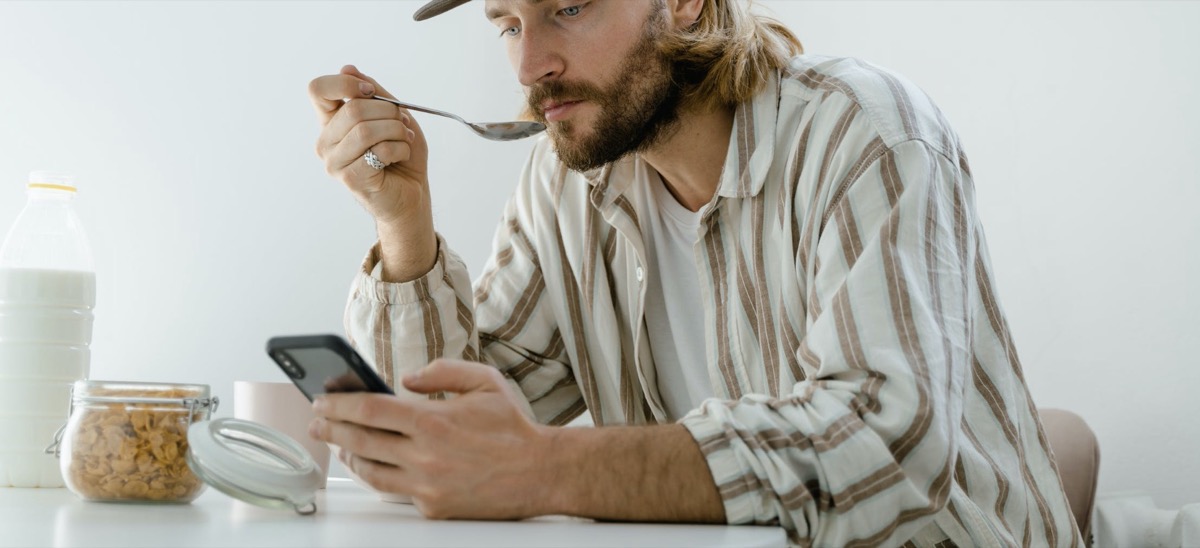Choosing Just Enough For You

Let’s talk about portions. We’ve heard and we technically know, all foods fit in appropriate portions. There’s nothing you can’t have when eaten in moderation. The most nutrient-dense foods in the world have appropriate portion sizes just like donuts.
However, after years of dieting and doubting our eating choices, knowing your body’s portion sizes get foggy. In the 70s high protein and high-fat diets told us the appropriate portion of carbs was basically zero. In the 80s, fats were put on the chopping block and we cut those out completely. Now, we’re inundated with contradictory information in one-second hearing that there is no amount of processed foods that belong in our diet and another saying that processed foods fit just fine “in the right portion.”
So how do you decipher all of this information and know what is “too little” or “too much” for your body? We consider the science of nutrition and the reality of your life. Let’s run through the steps my clients follow to find their appropriate portions.
Step 1 — The Balanced Plate:
The balanced plate is a widely accepted formula in the nutrition industry to help guide the consumer with rough portion sizes of every macronutrient without a diet mentality. It’s meant to be a guideline, not a rule, and includes all significant macronutrients that the body needs to survive. It’s inclusive yet adjustable.
I advise my clients to start off balancing their meals by portioning it with half a plate of low starch veggies, a quarter plate of starchy carbs, and a quarter plate of protein with healthy fats sprinkled in.

Broken down a bit more, this looks like 1–2 cups of low starch vegetables, ~1 serving of a starchy carb, 20–30g of protein, and ~1 serving of healthy fats.
I typically recommend working your way up to following this formula 2–3 times a day. (Realistically, breakfast might not have 1–2 cups of veggies and that’s okay.)
This is an ideal starting point to make sure we have everything we need for our body and brain to function optimally.
Step 2 — Hunger & Fullness:
Now that you have a guideline of how to build your plates, the next way to determine if you’re eating too little or too much, is your internal hunger and fullness cues.
A lot of us lose touch with our hunger and fullness cues when we’re dieting. We learn to ignore them in the name of a plan or lack of one. To truly know the right portions for yourself, it’s vital to practice listening to those cues again.
Try these tips to get back in touch with your hunger and fullness:
1. Drink a cup or two of water before you sit down for your meal.
This can help you ground yourself and get present. It brings awareness to your stomach and allows your brain and gut to connect.
2. Take 5 deep breaths before your first bite.
5 deep inhales and exhales have been proven to relax your nervous system, promote mindfulness, and even improve digestion. It’s another thing that will help engage your mind while you’re eating so you’re more aware and not on autopilot while you’re eating.
3. Eat without distraction — at least for a little while.
Often times when we eat with distraction, in front of the TV, or scrolling on our phones, we don’t taste our food or feel our fullness. For me personally, if I eat while I’m watching a TV show and finish my plate, it’s easy for me to go looking for a snack (hungry or not) just because I’m still watching TV and still want a snack. So I like to separate my tasks. Eating is eating. TV is TV. They’re not one in the same.

4. Pause.
Take a pause mid-way through your meal to check in with your stomach and get your body and brain on the same page again. How is the food tasting? How is your stomach feeling? Still hungry, keep going. Full but loving the taste, try savoring one last bite. Full and no longer enjoying the meal, wrap it up and save it for later.
5. Practical Hunger
If you never feel hunger, it could be helpful to practice Practical Hunger. This looks like eating breakfast with protein, fiber, and fat, not because you’re starving, but because you know your body needs food. Over time, you’ll start to hear those cues better again.
Step 3 — Dessert, Snacks, and Abundance Mindset
Perhaps the hardest task is knowing the appropriate portion size of dessert and snacks. We often think less is more and when we want more or are unsatisfied with the nibble of cake we allowed ourselves to have, feel confused and upset with ourselves that we lack control, and proceed to eat 3x as much as we need until we feel sick. (If I hit the nail on the head, it’s because I know that feeling all too well).
When it comes to dessert and snacks I like to approach it with an abundance mindset. You can eat the largest slice of cake. You can eat the full bag of chips. If you want more, you can have it. But don’t eat it just because “you can.” Choose your portion according to what you actually want. Do you want to feel comfortable? Enjoy the taste? Choose the portion size that will allow you both. I’ll often start with a serving size and then add or take away depending on how I’m feeling. Always knowing that this is a food I can balance in tomorrow if I want to.
Step 4 — Trial and Error:
Given those tools, now it’s time to practice and give yourself grace to fail, adapt, grow, and adjust. Everybody, appetite, and lifestyle are different. There will be days that you wait until you’re too hungry to eat and days that you eat past fullness. We’re human and that happens. Your task is to reflect, make a plan, and adjust accordingly next time.

Appropriate portion sizes for your body might eb and flow day to day as well. Give yourself permission to need an extra slice of toast some mornings, another serving of protein others, or two servings of dessert on a holiday instead of one.
I always recommend working with a professional to help you determine the right portion sizes for you. The outside pair of eyes looking in is such an underrated tool to help relieve you of the stress and anxiety we can put on ourselves when building healthy habits.
If you don’t have the means to work with a professional, don’t worry, Practice these tips and use the Ate app to help you reflect objectively on what’s working and what you want to adjust.
With my clients, I focus on shifting habits without restricting or counting calories to achieve sustainable weight loss or weight maintenance. We use practical nutrition so we can live life and feel our best!
Follow me on Instagram @Practical.Nutritionist and TikTok, or subscribe to my YouTube channel to stay up to date on the latest health tips and recipes! Or find me here: livingwithleena.com
If you’re ready to dive deep into your habits and feel confident about your choices surrounding food again, book a free consultation with me here!
